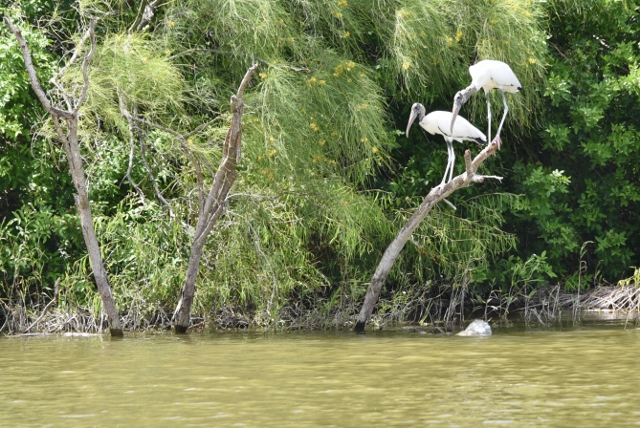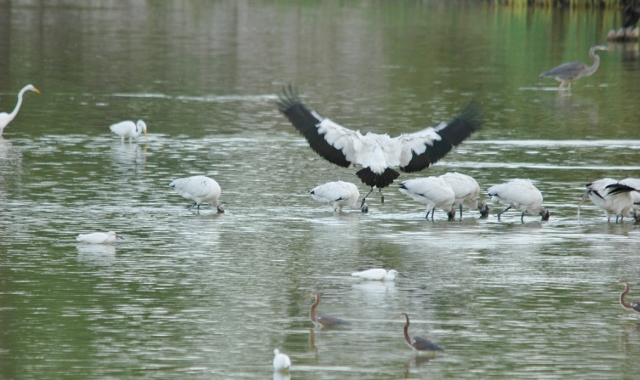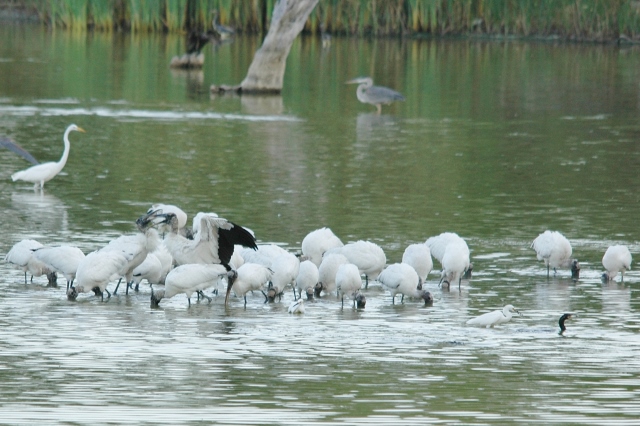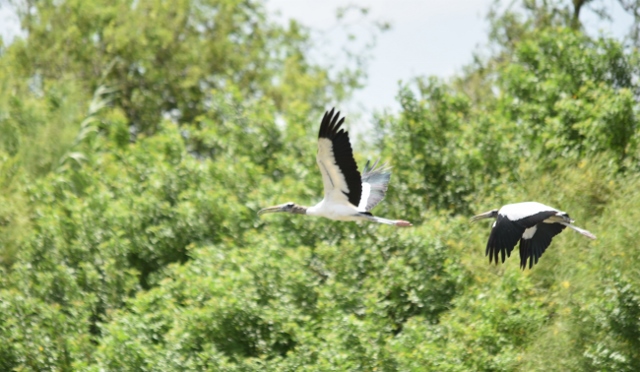
Story and photos by Anita Westervelt, Texas Master Naturalist
Wood stork, Mycteria Americana, is the only member of the stork family (Ciconiidae) native to America. There are 20 species in the Ciconiidae family, all generally found in temperate and tropical regions.
In America, wood storks breed primarily in the Florida Everglades and along the coasts of Georgia and the Carolinas. They have not been reported to nest in Texas since the 1960s, due mainly to habitat alteration. Wood storks are found as far south as Argentina. They are not considered true migrants, rather they move in response to food availability. During the late summer and fall months, some wood storks travel to Eastern Texas presumably from breeding populations in Eastern Mexico, according to Houstonaudubon.org.
Wood storks are large water birds that stand nearly four feet tall. Their plumage is nearly all white. In flight their shiny black feathers are visible along the entire trailing edge of their wings and tail. Their head and upper neck is devoid of feathers and the gray skin is rough and scaly. Their legs and bill are black; they have pink feet.

Extended visits to the Valley are rare, not only because they follow the food, but they are vulnerable to changes in water levels. They look for specific criteria in the wetlands, swamps, ponds and coastal marshes where they choose to congregate. After heavy rains, they’ve been known to frequent fields of standing water.
Because of their feeding tactics, they prefer shallow freshwater bodies that are beginning to recede and dry up — where fish are likely to be stranded, abundant and easy to catch. Wood storks rely on touch to catch their prey. They forage by walking slowly through the water with their bill open and dipped in the water. They push their feet up and down or flick their wings to startle prey. When they feel or see it, they snap their bill closed with an exceedingly fast reflex, swallowing the prey whole.
They are often seen feeding communally where they typically shuffle their feet to stir fish out of hiding for others to catch. They often feed with other water birds. Their diet consists mainly of fish, crayfish, frogs and large water insects. They also will eat snakes, baby alligators, small turtles, rodents and some seeds and other plant material. Their daily intake of food is about one pound of fish and other aquatic prey.

It’s not uncommon this time of year to view a muster of wood storks in flight as they search for those perfect bodies of water full of stranded fish. Although, look high — they soar like raptors, climbing high into the thermals. They have strong, interrupting wing beats interspersed with brief glides. They can be distinguished in flight from herons because, unlike herons, they fly and soar with their neck and legs extended. Their wing span is about five and one-half feet.

Recent DNA analysis suggests storks and New World vultures are more closely related to one another than storks are to ibises and herons, as previously considered.
– 30 –
Sources helpful in writing this article: Texas Breeding Bird Atlas, Florida Fish and Wildlife Conservation Commission, North Florida Ecological Services Office, U.S. Fish & Wildlife Service, Dallas Trinity Trails BlogSpot and Audubon.org.